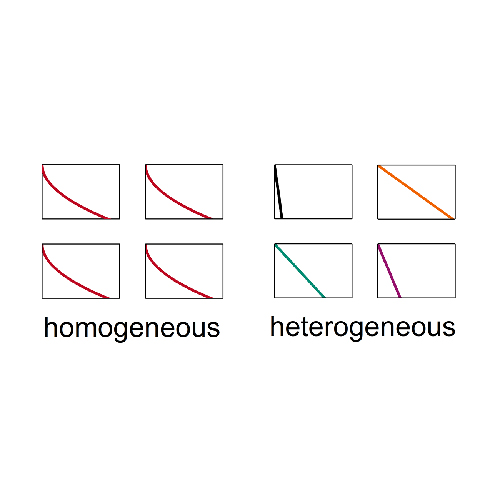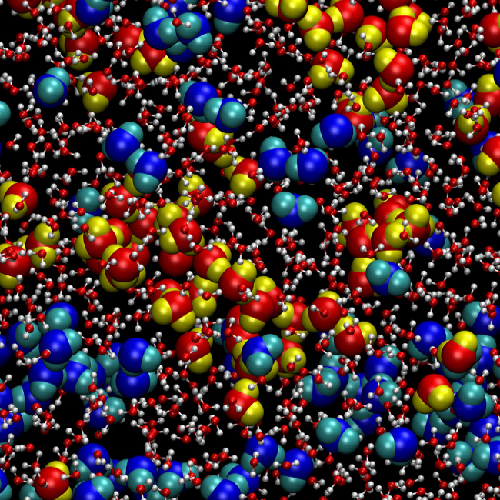Using a sequence of seven radio-frequency pulses, we measure three-time correlation functions, which allow us to quantitatively determine the relevance of homogeneous and heterogeneous contributions in supercooled liquids. The results indicate that the existence of dynamical heterogeneities is an important feature, i.e., fast and slow molecules coexist at a given temperature. However, there are also rapid exchange processes between fast and slow molecules from the distribution of correlation times, which restore the ergodicity of the supercooled liquid.
Institute for Condensed Matter Physics

Glass transition
A number of liquids can be cooled to temperatures below the melting point without crystallization. In the supercooled liquid, the structural relaxation continuously slows down by about 15 orders of magnitude when the temperature is decreased.
Behavior still not fully understood
Eventually, the structural relaxation ceases on the experimental time scale at the glass transition temperature – an amorphous solid, the glass, forms. For the structural relaxation of supercooled liquids, it is usually found that its time dependence deviates from single-exponential behavior and its temperature dependence differs from an Arrhenius law. Many scientists argue that these effects can be attributed to a spatial heterogeneity of molecular dynamics in supercooled liquids. However, despite numerous studies in the last decades, a complete understanding of these characteristic behaviors of glass-forming liquids is still lacking.

Picture: AG Vogel
Experiments on the glass transition
In general, non-exponential relaxation can be explained by two fundamentally different scenarios – the limit of purely homogeneous dynamics and the limit of purely heterogeneous dynamics.

Picture: AG Vogel
Simulations on the glass transition
The results of our molecular dynamics simulations confirm the spatially heterogeneous nature of dynamics in supercooled liquids. For example, particles with exceptionally high mobility form clusters. Analyzing the dynamics in these clusters, we find that highly mobile particles often show cooperative motion in “strings”. Thereby, the involved particles replace their respective neighbors along the direction of the string.
Selected publications
- M. Becher et al., “Molecular Dynamics Simulations vs Field-Cycling NMR Relaxometry: Structural Relaxation Mechanisms in the Glass-Former Glycerol Revisited,” The Journal of Chemical Physics 154, no. 12 (March 28, 2021): 124503, https://doi.org/10.1063/5.0048131.
- R. Horstmann and M. Vogel, “Common Behaviors Associated with the Glass Transitions of Waterlike Models,” The Journal of Chemical Physics 147, no. 3 (July 21, 2017): 034505, https://doi.org/10.1063/1.4993445.
- Niels Müller and Michael Vogel, “Relation between Concentration Fluctuations and Dynamical Heterogeneities in Binary Glass-Forming Liquids: A Molecular Dynamics Simulation Study,” The Journal of Chemical Physics 150, no. 6 (February 14, 2019): 064502, https://doi.org/10.1063/1.5059355.




